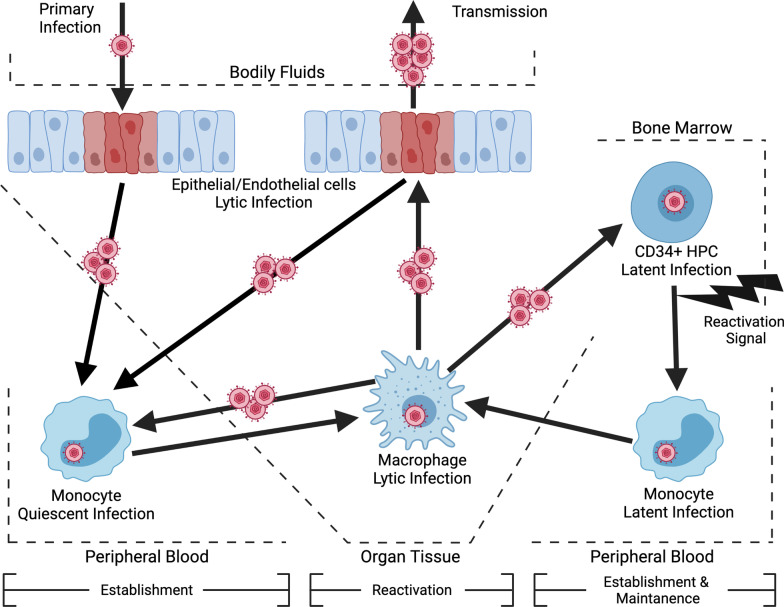Fig. 1.
The myeloid compartment and HCMV latency. During a primary infection, HCMV is spread through bodily fluids to oral epithelial cells, which are permissive for lytic infection. HCMV then infects peripheral blood monocytes, resulting in a unique form of latency known as a quiescent infection. Cellular signaling induced by viral entry drives the survival, extravasation, and monocyte-to-macrophage differentiation of infected monocytes. Viral spread to peripheral organs leads to lytic infection of tissue endothelial and epithelial cells. Additionally, infected monocytes can travel to the bone marrow and spread HCMV to CD34+ HPCs, which are the long-term latency reservoir. Following an external reactivation signal, latently infected HPCs preferentially differentiate down the myeloid lineage into latently infected monocytes, and ultimately into replication permissive macrophages. Overall, the myeloid compartment is essential to viral life cycle and allows for the life-long persistence of HCMV

